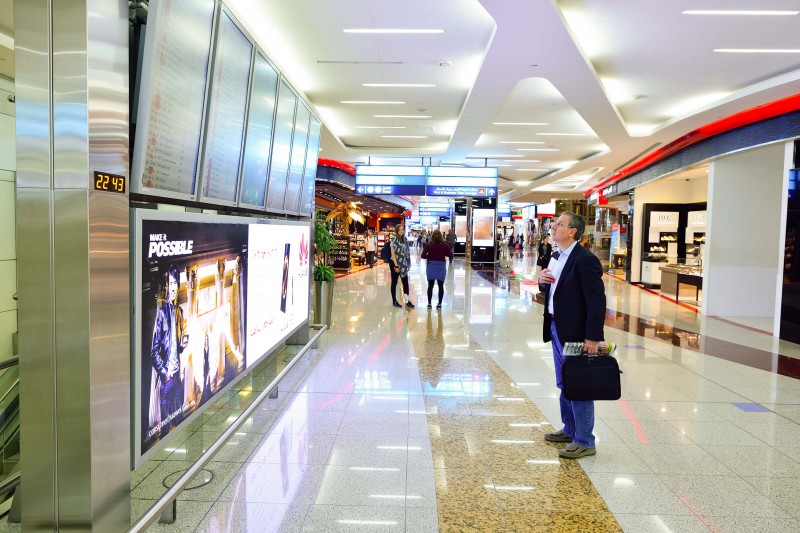Dubai Airports, in partnership with Samsung Electronics and AirportLabs has achieved another first in the region by rolling out an advanced cloud-based Flight Information Display solution along with System on Chip (SoC) display technology.
According to the Dubai Media Office, the new solutions will be rolled out at the Dubai International (DXB) and Dubai World Central (DWC) airports. As part of the project a total of 2,700 display screens were also replaced across Terminal 3, Concourses A, B and C.
The upgrade is the result of an initiative undertaken by Dubai Airports in 2016 to adopt a cloud-based FIDS to replace a fragmented system across the facility and achieve flexible, environmentally-sound and cost-effective operations.
With the new system, Dubai Airports team can now operate its new VisionAir FIDS software without external PCs – a consolidated approach that is already reducing both the airport’s electrical footprint and operational costs.
Michael Ibbitson, Executive Vice President of Technology & Infrastructure at Dubai Airports said, “As the world’s busiest international airport that is operating at nearly full capacity, we understand that the most efficient way to accommodate growth without physically expanding the infrastructure is by deploying smart technologies and enhancing processes. Information and communication are critical elements of airport operations and we are positive this new display system will go a long way in helping us deliver a smooth experience consistently for the millions of customers that pass through our airports each year.”
Some of the advanced capabilities of the new system include the ability to run it from an internet browser without the need for any local software installation. It allows enabling of screen layouts and content for specific zones within the airport from a mobile device or from the control room.
The system allows collaborative content management giving airlines, ground handlers or other airport service partners some level of control in managing different types of content such as branding, passenger advisory, as well as operational messaging, flight information and advertising. The system can also help reduce energy consumption through control of backlight.





